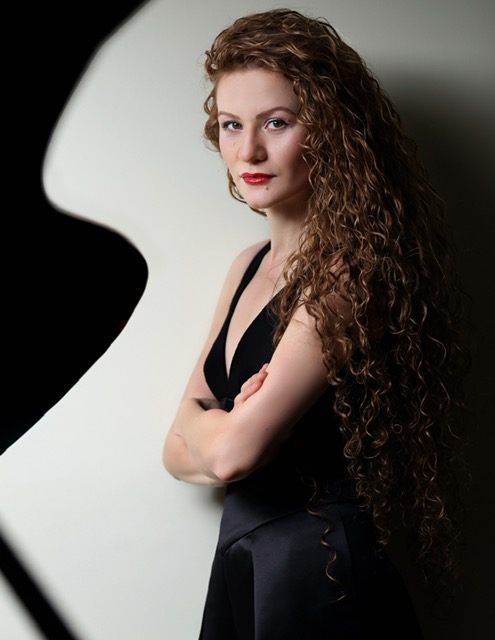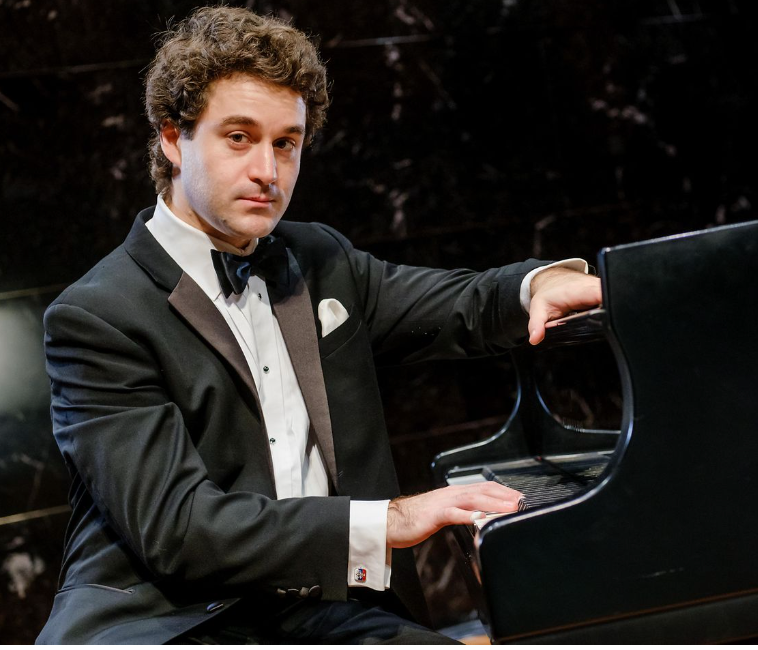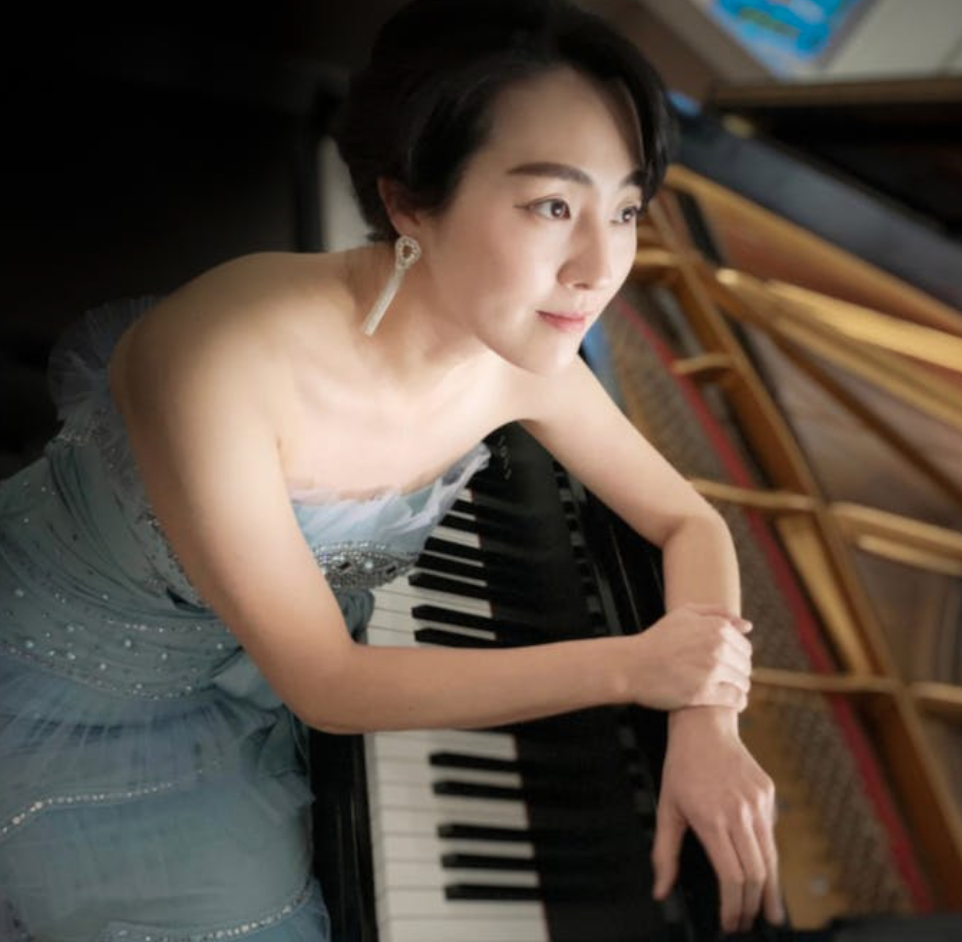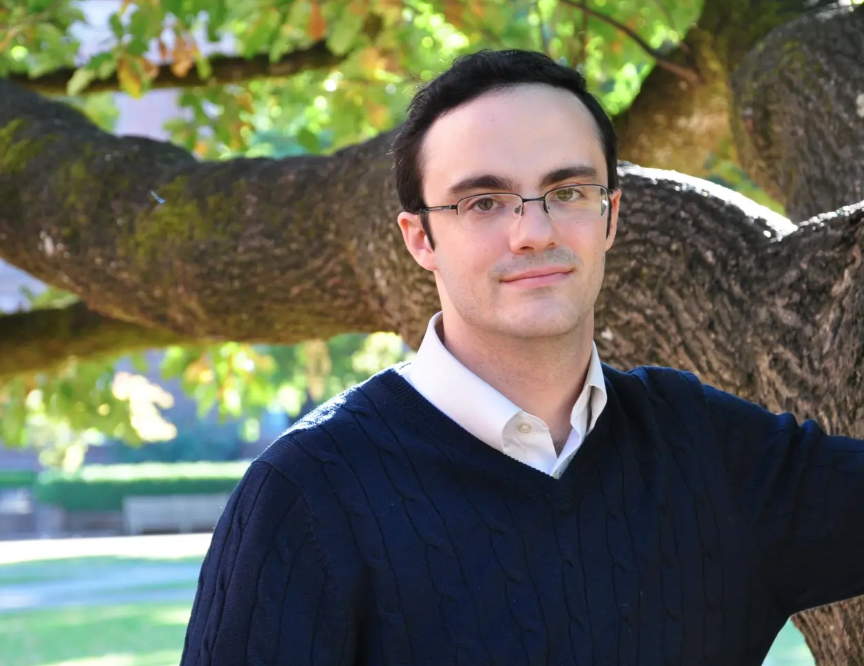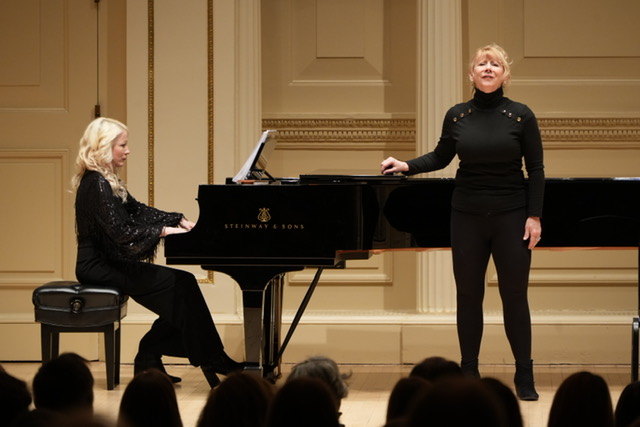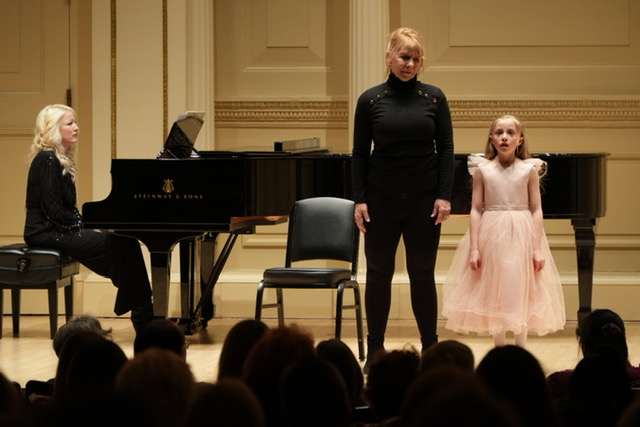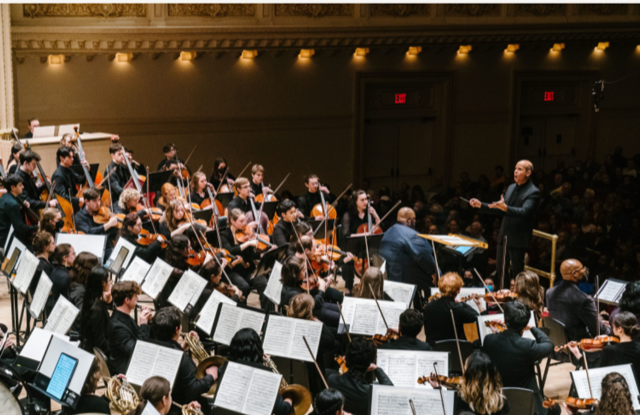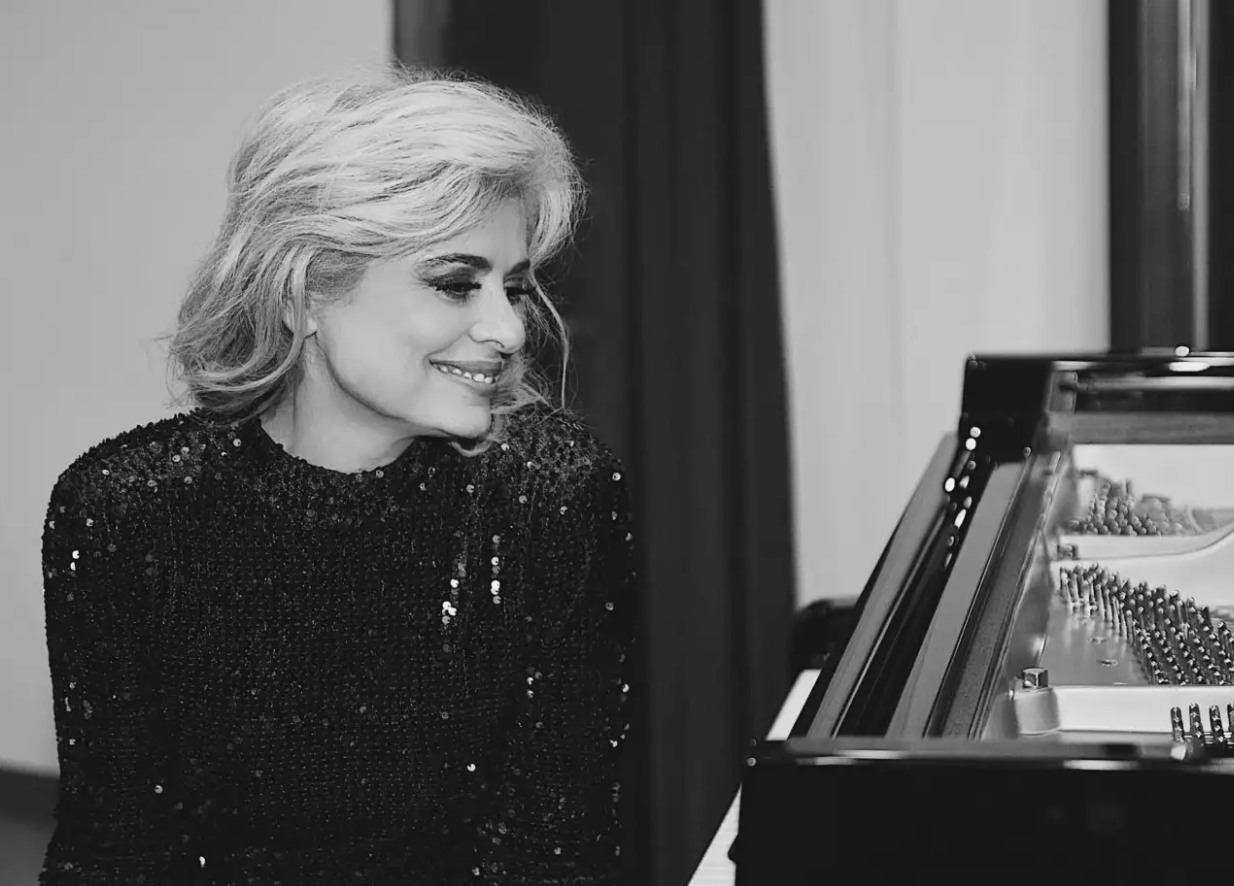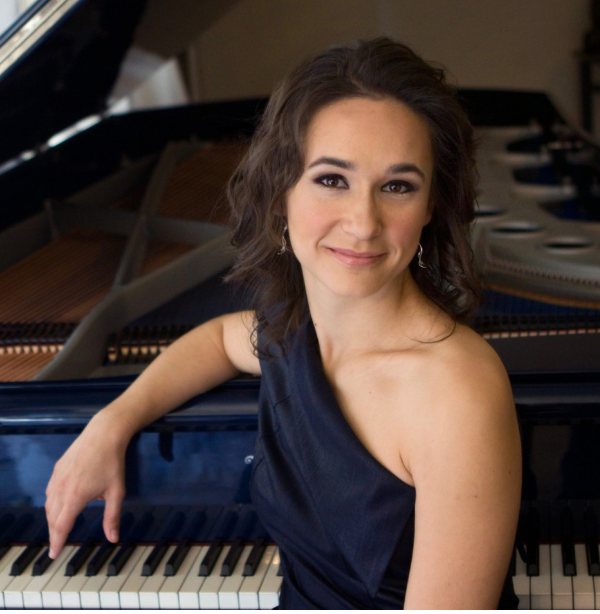Asiya Korepanova, pianist
Rachmaninoff 150th Birthday Concert: Part II
Mary Flagler Cary Hall, The DiMenna Center for Classical Music, New York, NY
April 1, 2023, 8 PM
As anyone who loves great piano music and great pianists probably knows, 2023 marks the 150th birthday of the great pianist, composer, and conductor Sergei Rachmaninoff. Many of the world’s pianistic luminaries have been and will be celebrating his music all year – even more than usual – but the actual birthday comes only once, April 1 (though Rachmaninoff was known interestingly to celebrate it on April 2, as his grave is marked at Kensico as well). On late notice, I was assigned to an all-Rachmaninoff concert celebration and despite a tight schedule jumped at it – both for the repertoire and for what I had heard of the pianist Asiya Korepanova and her ambitious programming – though I had never actually heard her play.
Based on her programming alone, Asiya Korepanova is a force. Many musicians may have seen photos of her looking rather like a mermaid with golden hair stretching for miles, but what not everyone knows is that her repertoire stretches for many more miles. As her biography states, she is “the only pianist currently performing Liszt’s 24 Etudes as a single program, and one of the few to possess a concerto repertoire of over 60 works.” In 2023 she has been engaged in a monumental project performing Rachmaninoff’s complete solo piano music in six recitals as a featured artist at the Friends of Chamber Music of Miami. For those who know Rachmaninoff’s music, there should be a long pause here to contemplate what that means: the two fiercely demanding sonatas, two large sets of preludes, two large sets of etudes, two large-scale sets of variations, the Moments Musicaux, and numerous smaller works. A fair number of pianists will play them all eventually in a lifetime, but to perform them all in one year? On top of the feat of performing all of these, Ms. Korepanova (as if running out of challenges) added to this concert her own transcription for solo piano of Rachmaninoff’s Sonata for Cello and Piano, Op. 19, one of this reviewer’s favorite works in its original form, so a huge draw to attend this concert. How would it sound minus the actual cello? Will it become a new gift to the world of virtuoso transcriptions? These questions will be revisited later, but we’ll move on first to the program, scheduled to include also the Variations on a Theme by Corelli, Op. 42, and the Moments Musicaux, Op 16.
In a change from the printed program order (originally starting with the transcription, then Op. 42 and Op. 16), Ms. Korepanova announced that she would start with the Corelli Variations, as she found the opening theme to be like a prayer. Indeed it is, and she made it more so, honoring its hallowed, translucent spirit. Much of what she did following the theme was also just as one wants to hear in this magnificent set. She has a superb pianistic technique, as one would expect from her programming, but there was much more. She projected nuances and harmonic surprises wonderfully in the quirky third variation and elsewhere, and one was reminded that pianists who compose are often going to delve more deeply into the music and with more interesting insights than others. Ms. Korepanova, as her biography states, studied composition with Albert Leman, chair of the composition department of the Moscow Conservatory and a student of Dmitri Shostakovich. Along with her growing number of transcriptions, she has composed many original works, as well as multimedia projects featuring her poetry and art.
To be balanced about things, composers have another trait quite often, which is to hold to a masterful overview while letting slip what they might consider details. Though there were wonderful inner highlights in Variation 13, for example, Variation 12 was rough. The beastly penultimate variations were not altogether tamed either, though the spirit was fierce, just as it should be before the poignant close. Other minor reservations included a sense that a fuller sound was needed for the melodic top voice in the D-flat variation, even if by that point the interest lay more in the harmonic treatment. A certain amount of that issue may have been due to the hall piano, which seemed not entirely even.
Onward to the Moments Musicaux, Ms. Korepanova set a contemplative tone for the B-flat minor Andantino that was just right. There were moments later in the piece of some excessively blurred pedaling, both in melodic sections and passagework – and where the theme returns woven into a lacework of sixteenths, there was more of a pastel blend than the clarity that makes it glisten – but these may be differences of conception. Overall the set offered a huge spectrum of moods and colors and was quite impressive on such an already demanding program.
Minor glitches in the opening piece were handled with the skill of a master improviser, but these were a bit more distracting in the Allegretto in E-flat minor and the Presto in E minor; both, though, had the emotional power and sweep to carry the day. The Andante cantabile B minor was close to perfection. Here again there we heard Ms. Korepanova’s gift for “connecting dots” in wonderful inner voice surprises. The Adagio sostenuto in D-flat was serenely expressive.
Though the final Maestoso in C Major also had its unclear moments, it ended the first half with a persuasively heroic spirit. For complete disclosure, this final Moment is not a favorite of this reviewer, and it alone has prevented the reviewer from performing this group as a set rather than as two or three gems at a time. When one recalls that Rachmaninoff released this set for publication supposedly because he was short of money, this final movement offers possible evidence of that, seemingly dashed off, with flourishes that sound facile compared to the rest of the set. As much as I admire the bravery of those who take on the whole Op. 16, a virtual hexad of musical challenges, most performances of all six have not helped my aversion to the “boxed set” mentality – and that is from a diehard devotee of Rachmaninoff.
After intermission came the long-awaited transcription of the Sonata for Cello and Piano by Ms. Korepanova. Before playing, she spoke about the piece, her early love of it, and many subsequent performances, along with the questions she has been asked about it (such as why is she being “mean” to cellists, isn’t there enough piano repertoire for her, and is she nuts?). Frankly, based on the fact that many pianists have for decades referred to it jokingly as “a piano sonata with cello obbligato” a transcription seems not an outlandish idea at all. Thankfully Ms. Korepanova was not dissuaded from writing it and was in fact encouraged by her piano teacher, Santiago Rodriguez, who asked her (if I heard her story correctly amid some noise), “what are you waiting for?” Every musician needs someone to ask that.
Any lingering doubts about the transcription were rendered moot by the appeal of the performance itself. Amazingly, Ms. Korepanova managed not only to incorporate the cello lines but also to maintain much of their distinctiveness overall, amid the piano textures. Though there is hardly a true substitute for a sustaining instrument (and the potential for vibrato), the piano can convey almost anything (entire Beethoven Symphonies, for example). Ms. Korepanova demonstrated superb control of timbres so that repeated themes did not sound like mere repetition but like the passing of ideas to another instrument. Sometimes she bolstered cello lines with octaves, and sometimes she reined in the dynamics of the original piano part to a surprising degree (which might be disconcerting to lovers of the original – but tweaking has to happen to make the proportions work). All in all, it was a miraculous achievement.
The most salient drawback I expected from this transcription was the missing “two-ness” of it – the exchange of the glorious third movement theme, and the convergence of two human forces towards the end – but these were remarkably approximated by this single pianist. Though the actual playing may have flagged in energy towards the end, that was perhaps to be expected in such a big program. Incidentally, Ms. Korepanova played this work from her own score off of a digital screen (having played all prior solo works from memory), and that score is now available for purchase. www.asiyakorepanova.com
Though cellists will at no point stop playing (nor audiences stop clamoring for) the original masterpiece, Ms. Korepanova’s transcription makes a worthy addition to the virtuoso literature. In addition, beyond the sheer joy of playing it, a pianist can enjoy a performance free of intonation trouble, ensemble issues, extra airfare, and splitting artist fees! It seems fitting to include here Ms. Korepova’s comments on the transcription process from her website as follows: “The process of making a transcription is akin to the most consuming and passionate process of taming a wild animal… And when you finally find that all of it is possible, you are the happiest creature in the world.” Ms. Korepanova should indeed be happy. Her standing ovation earned her large audience two encores, Rachmaninoff’s Romance (composed at age 14) and the Elegie in E-flat minor, Op. 3, No. 1, both beautifully played. Brava!

